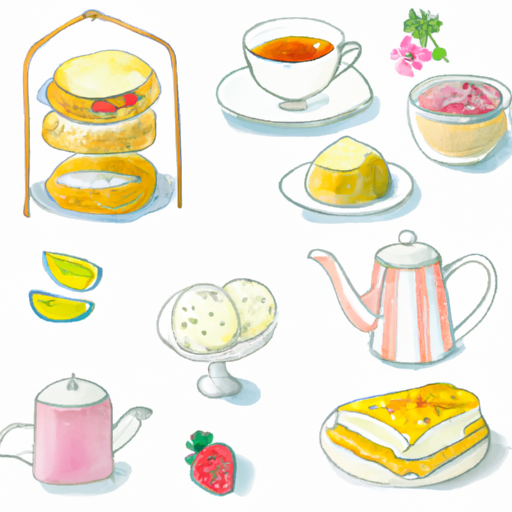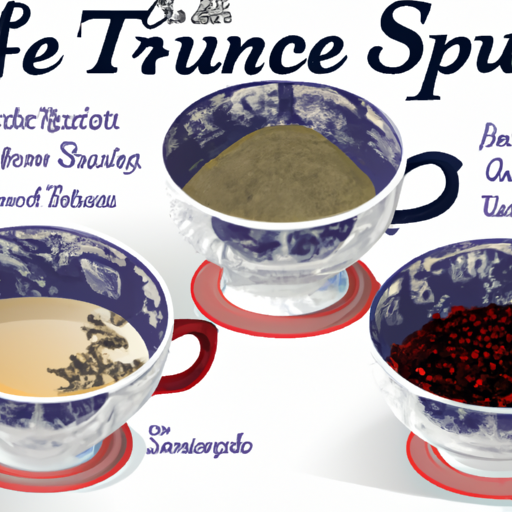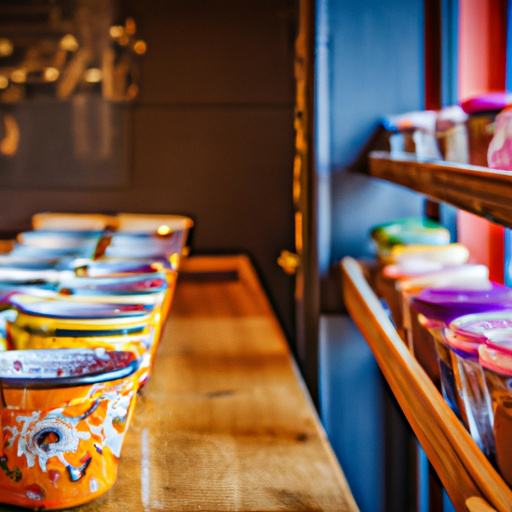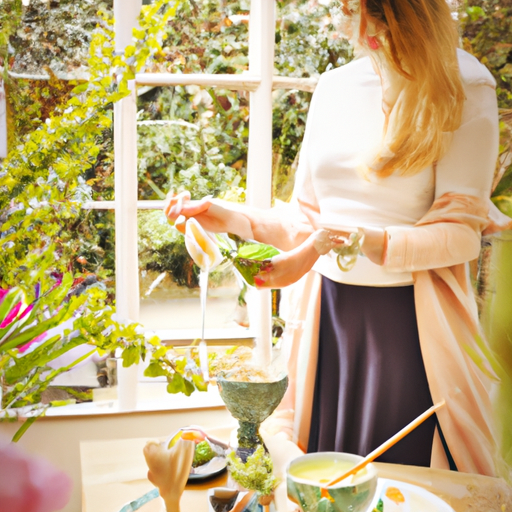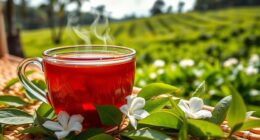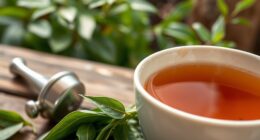Are you aware that afternoon tea, a classic English social event, dates back to the 1840s? Today, it continues to be a beloved and enjoyable way to pass the time.
As someone who appreciates the finer things in life, I believe it is important to know how to properly serve and eat traditional afternoon tea. In this article, I will guide you through the courses, presentation, and tea selection and preparation for this elegant affair.
We will explore the three main courses of savouries, scones, and sweets, all served on a three-tier tea stand. I will also share tips on selecting the perfect tea and preparing it to perfection.
So, grab a cup of tea and join me as we embark on this delightful journey into the world of traditional afternoon tea.
Key Takeaways
- Afternoon Tea originated in England in the 1840s as a social gathering for the upper class.
- Afternoon Tea is typically served around 3pm or 4pm.
- The three main courses of afternoon tea are savouries, scones, and sweets.
- Each guest should have about 4 tea sandwiches, 1 scone, and 2 sweets as a minimum.
What is Afternoon Tea?
Afternoon tea is a delightful tradition that originated in England in the 1840s. It is typically served around 3pm or 4pm. Afternoon tea consists of savouries, scones, and sweets, all served on a three-tier tea stand.
The history of afternoon tea dates back to the Duchess of Bedford, who started the tradition as a social gathering for the upper class. Etiquette plays a significant role in serving and enjoying afternoon tea. The three-tier tea stand is essential for displaying the different courses. It is important to follow the proper order of eating, starting from the bottom tier with the savouries, moving to the middle tier for the scones, and finishing with the sweets on the top tier.
Scones are traditionally served with clotted cream and jam, and loose leaf tea is preferred for its better flavor. Overall, afternoon tea is a refined and enjoyable experience when accompanied by good conversation and a warm cup of tea.
Courses and Presentation
To fully appreciate the experience, I start with the bottom tier of the three-tier tea stand, which holds the savory course consisting of tea sandwiches, mini quiches, tartlets, deviled eggs, and crostini. The presentation of these savories is important in traditional afternoon tea as it sets the tone for the rest of the meal. Each tea sandwich should be small and delicate, and the fillings should be flavorful and well-balanced. The mini quiches and tartlets should be bite-sized and visually appealing. The deviled eggs should be perfectly cooked and seasoned, while the crostini should be crispy and topped with delicious toppings. Serving these savories with attention to detail and elegance adds to the overall experience of traditional afternoon tea. Etiquette for serving tea is also crucial. The tea should be brewed properly and served in a teapot at the right temperature. Using a tea strainer for loose tea leaves ensures a smooth and enjoyable cup of tea. The presentation of the table should also be considered, with a beautiful tablecloth, fine china, and elegant tea cups. Following these etiquette guidelines enhances the traditional afternoon tea experience and adds a touch of sophistication.
| Importance of Presentation | Etiquette for Serving Tea |
|---|---|
| Sets the tone for the meal | Proper brewing and serving |
| Attention to detail | Using a tea strainer |
| Adds to the experience | Table presentation |
| Elegance | Fine china and tea cups |
| Sophistication | Following etiquette |
Tea Selection and Preparation
When choosing a tea for my afternoon tea gathering, I always opt for a classic black tea like Earl Grey, as its bold flavor pairs perfectly with the delicate savories and sweets.
Brewing the perfect cup of tea is crucial for a traditional afternoon tea experience. Start by using loose leaf tea for a better flavor profile. Boil fresh water and allow it to cool slightly before pouring it over the tea leaves. Let the tea steep for about 3-5 minutes, depending on your preference for strength. To enhance the flavors, you can add a slice of lemon or a splash of milk.
When it comes to tea pairings, black tea goes well with savory items like tea sandwiches and quiches, while sweeter teas like jasmine or green tea complement desserts like pastries and cakes.
A well-brewed cup of tea adds a comforting and refreshing element to the overall afternoon tea experience.
Frequently Asked Questions
What is the history behind the tradition of afternoon tea?
The tradition of afternoon tea has a rich history dating back to the 1840s in England. It originated as a social gathering for the upper class and was popularized by the Duchess of Bedford.
Are there any specific etiquette rules to follow when attending an afternoon tea?
Oh, the joy of attending an afternoon tea! Etiquette rules are a must. We must mind our manners and observe tea party customs. From using the correct utensils to sipping tea with grace, it’s a delightful dance of elegance.
Can you provide tips for hosting your own afternoon tea party at home?
Sure! When hosting an afternoon tea party at home, here are some tips: 1) Set a beautiful table with a floral centerpiece and elegant tableware. 2) Serve a variety of tea sandwiches, scones, and sweets. 3) Provide a selection of teas to cater to different tastes.
Are there any modern variations or twists on traditional afternoon tea that are popular today?
Modern variations and unique twists on traditional afternoon tea have become popular today. These include themed afternoon teas like Alice in Wonderland or Harry Potter, as well as contemporary twists on classic recipes and unconventional tea pairings.
Is there a specific dress code for attending afternoon tea at a formal establishment?
There is typically a formal dress code for attending afternoon tea at a formal establishment. It is important to dress appropriately and adhere to any specific dress requirements set by the establishment.

